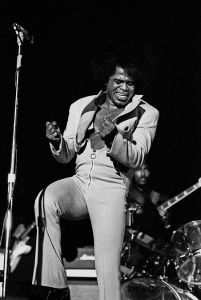March 14 to 16, Crowne Plaza, Baton Rouge Louisiana. That was the time and place of the Louisiana NFB Affiliate Convention. I attended as a representative and salesperson for E.A.S.Y. LLC, the Vermont start-up making waves in the world of tactile graphics. This must be the sixth State Convention I’ve attended, and one thing became clear fast; NFBLA has it’s act together. Two hundred and forty people were registered, organization was impeccable, and spirit was high. As an engineer, entrepreneur and sighted human, NFB gatherings are always interesting, but this one was a standout.
I shared the exhibit hall with Rick Payton of Southern Assistive Technology. Just two booths seemed a little light, but Rick is a 30-year veteran in access technology and had a lot of product areas covered. The room attracted little traffic on Friday but my concerns were eased when a non-stop stream of people came through on Saturday.
And what people they were. I met a couple who had met each other years earlier at the Louisiana Center for the Blind. They were accompanied by their daughter, now at the Center, accompanied by her boyfriend, whom she met at the Center. “Center” indeed. At the booth and at the Banquette I heard for the first time (I am, after all, an outsider) about Convention children who… ahem… whose birth could be directly attributed to the good times enjoyed by their parents at Convention. I met a young blind student, American, who used our inTACT Sketchpad to draw tactile Chinese character and speak for me the phrase they represented; and then switched to writing Greek, verbalizing in that language too.
And then there was the deafblind lady. I had first noticed her during General Session where she was keeping up with the speeches from the dais through her hand-over-hand signing interpreter. I recall my immediate reaction of admiration, tempered now from years of exposure to can-do Federationists, as I watched her full participation in life apparently unhandicapped by her disabilities. But then there was another more personal contact. This lady and interpreter came to the E.A.S.Y. LLC booth on Saturday. Again I recall my fleeting but undeniable internal reaction: “Doesn’t this person have enough challenges and urgent agendas without also taking on drawing?!” (Clearly this is not the sort of reaction, even unspoken, I should have as a passionate promoter of tactile graphics for the blind. Live and learn…)
And so my new acquaintance arrived at the booth and indicated she was indeed interested in drawing. I suggested that I’d make a quick raised-line sketch on the inTACT Sketchpad and ask her to touch and react. I drew a stereotypical Happy Face and passed it to her. She read it quickly with a brush of her fingertips and indicated her comprehension by tracing a circle about her own face and mimicking the drawn smile. Then I handed her the stylus and suggested she add some features to the face. I think I requested ears. But she had other ideas. With bold and effective continuous loops, she overlaid the top 180 degrees of the bald head with a crescent of curls. But there was more to come; she heaped ever higher layers of curly hair rising almost a full head-height above the first batch. Content with the effect, she printed rapidly below the head, identifying the image as “James Brown”, smiling with satisfaction at her work. James Brown!
The result was clever, very funny, cartoonishly accurate – and most of all, completely unexpected. And it’s this last reaction I want to take note of. Certainly part of my surprise comes from the fact that most people, with or without disabilities, are not this clever and quick-thinking. But I have to admit that, even after six years of working with accomplished blind people, and over forty years of professional and personal involvement with people living with a variety of other disabilities, I still discover in myself a remnant of low expectations. Put simply, if you’re living with a disability, some part of me still doesn’t expect you to make a witty allusion to James Brown. As child of the 1940’s, it’s the same as still visualizing “male” when I hear M.D. I hope to live long enough to shake this. Certainly my blind and deaf colleagues are nudging me towards full enlightenment.


Recent Comments